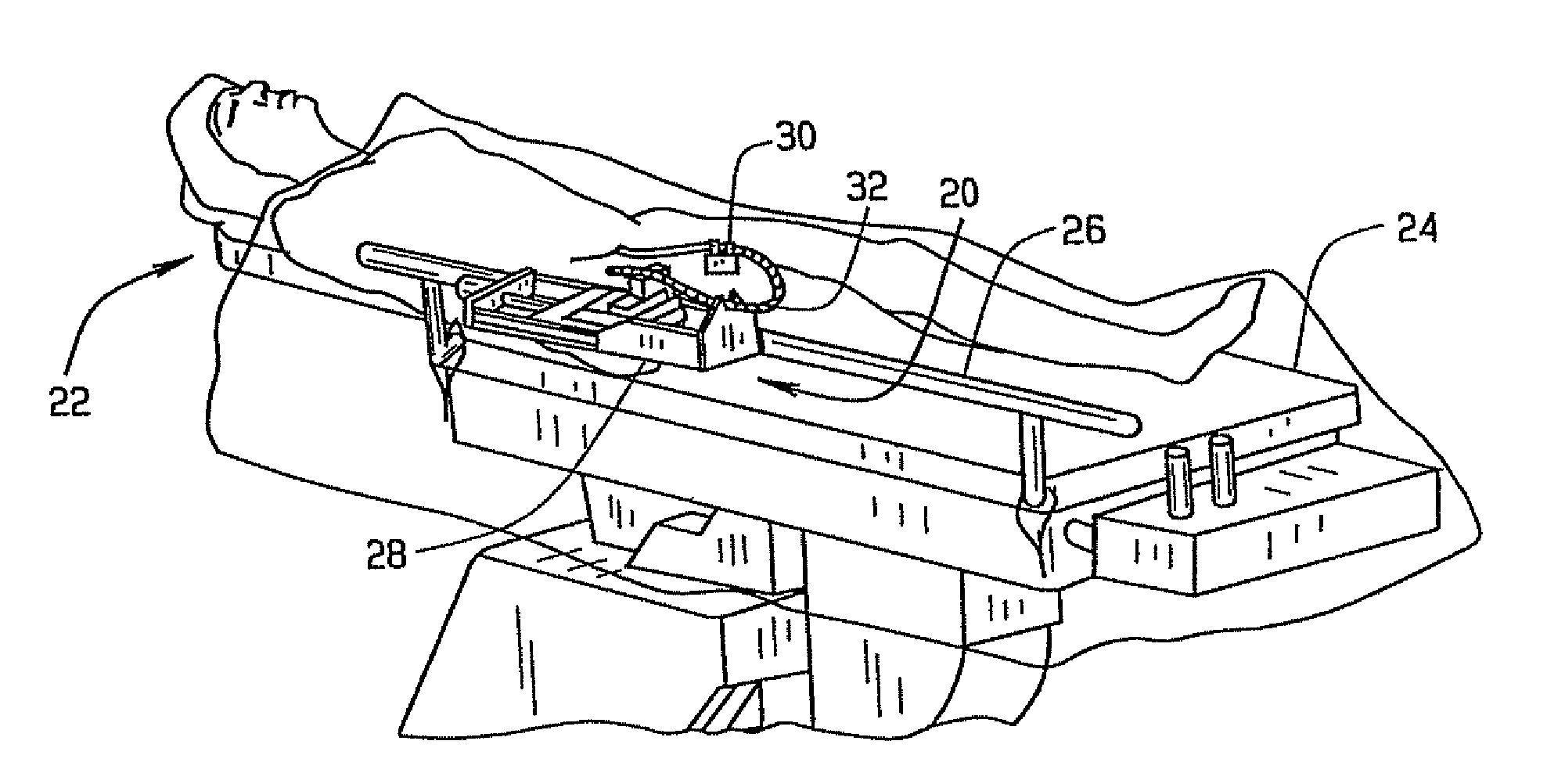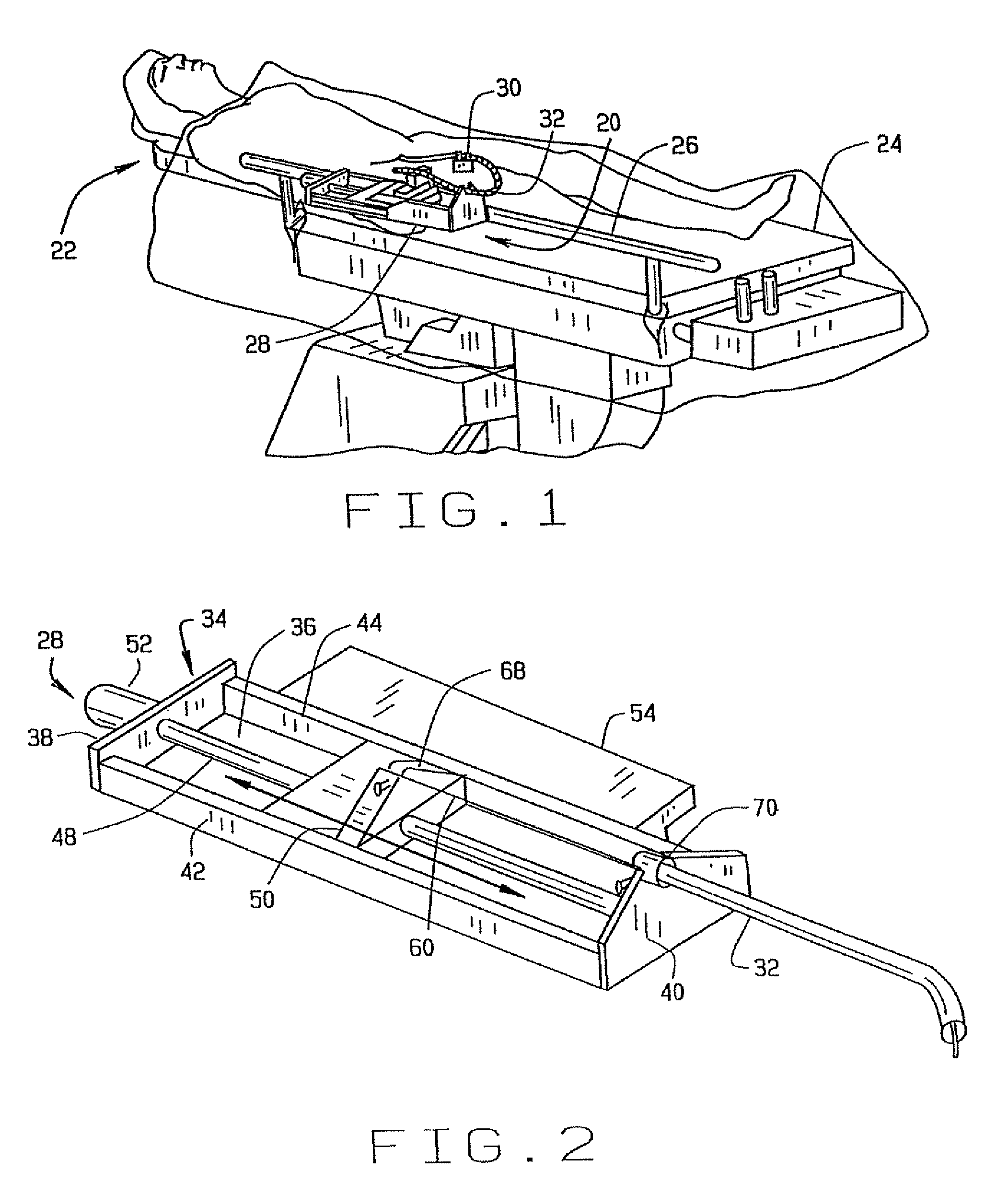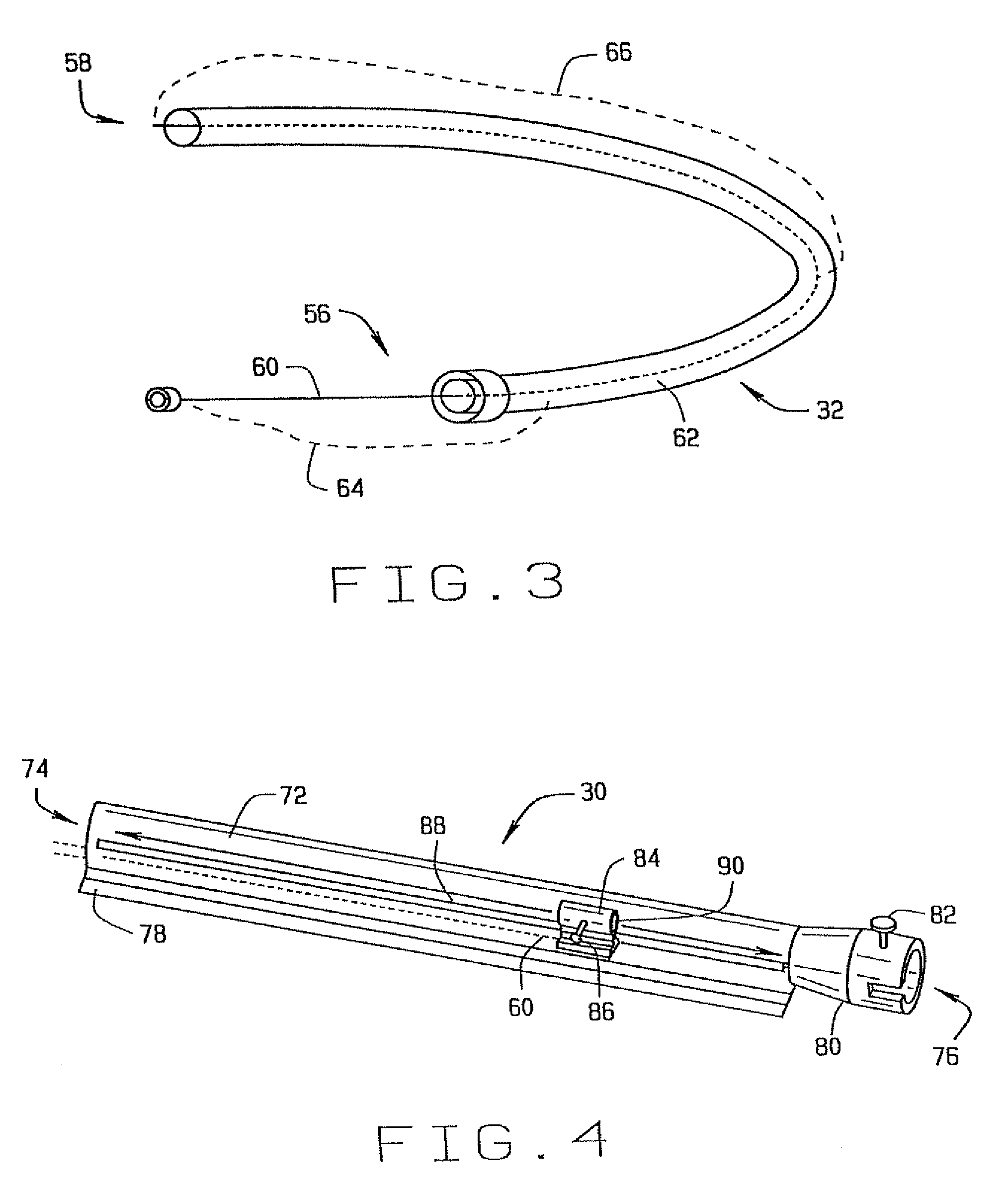System and methods for advancing a catheter
a technology of advancing catheters and catheters, applied in the field of system and method of advancing catheters, can solve the problems of increasing the risk of repeated exposure of physicians to x-ray fields, increasing the difficulty of controlling devices, and increasing the risk of injury to patients, so as to reduce the risk of repeated exposure to x-ray fields
- Summary
- Abstract
- Description
- Claims
- Application Information
AI Technical Summary
Benefits of technology
Problems solved by technology
Method used
Image
Examples
first embodiment
[0043]an advancer system, or advancer, constructed according to the principles of this invention is indicated generally as 20 in FIG. 1. The advancer 20 comprises a drive unit 28 that is connected to a slide unit 30 via a control cable 32. The advancer drive unit 28 is shown as it would be mounted on a patient table 22 for moving an elongate medical device in a patient lying on the table. The table 22 has a support surface 24 and one or two side rails 26. The medical device might be, for example, a catheter that is being advanced through the patient's vasculature, during a cardiac mapping procedure. The slide unit 30 is shown resting on a leg of the patient. The advancer system 20 also includes a control system having a controller or processor, and at least one operator input device, described in more detail below.
[0044]As shown in FIG. 2, the drive unit 28 comprises a frame 34 having a bottom 36, first and second ends 38 and 40, and first and second sides 42 and 44. A cover (not sh...
second embodiment
[0061]an advancer constructed according to the principles of this invention is indicated generally as 300 in FIG. 9. The advancer 300 comprises a drive unit 310, shown as it would be mounted on a patient table 302, for moving a medical device in a patient lying on the patient table. The medical device might be, for example, a catheter that is being advanced through a patient's vasculature, during a cardiac mapping procedure. The advancer 300 is adapted for moving a medical device through a sheath 306 and into a patient on the table 302. The advancer 300 also includes a control system having a controller or processor, and at least one operator input, for example, as previously described with respect to FIGS. 5 through 8.
[0062]As shown in FIG. 10, the drive unit 310 comprises a frame 312 having a bottom 314, first and second ends 316 and 318, and first and second sides 320 and 322. A cover (not shown) may also be provided to enclose the drive unit 310. A lead screw 324 extends longitu...
fifth embodiment
[0066]an advancer drive unit constructed according to the principles of this invention is indicated generally as 500 in FIG. 13. The drive unit 500 includes a lightweight, e.g. less than one-pound, motor 510 and is attached, for example, on the thigh of a patient lying on a table 512. The motor 510 preferably is sterilizable and disposable, thus allowing a catheter and sheath to be directly attached to the advancer drive unit 500. The drive unit 500 is controlled by a control system (not shown in FIG. 13), as previously described in connection with FIGS. 5 through 8.
PUM
 Login to View More
Login to View More Abstract
Description
Claims
Application Information
 Login to View More
Login to View More - R&D
- Intellectual Property
- Life Sciences
- Materials
- Tech Scout
- Unparalleled Data Quality
- Higher Quality Content
- 60% Fewer Hallucinations
Browse by: Latest US Patents, China's latest patents, Technical Efficacy Thesaurus, Application Domain, Technology Topic, Popular Technical Reports.
© 2025 PatSnap. All rights reserved.Legal|Privacy policy|Modern Slavery Act Transparency Statement|Sitemap|About US| Contact US: help@patsnap.com



